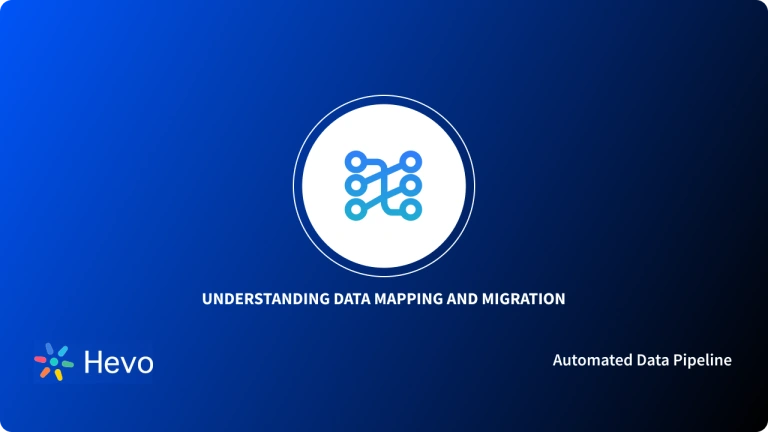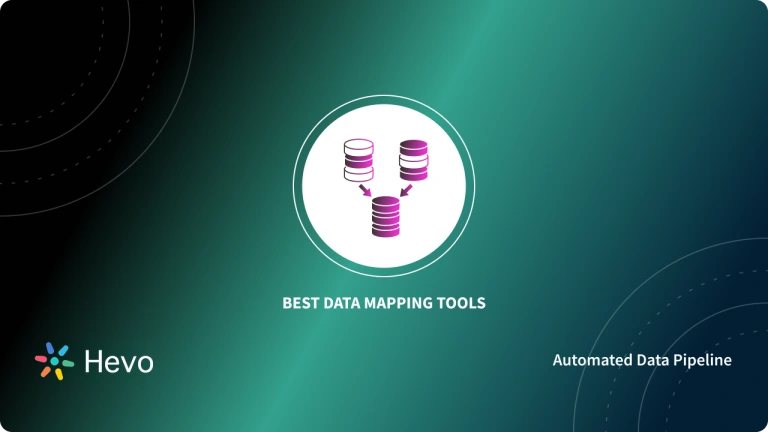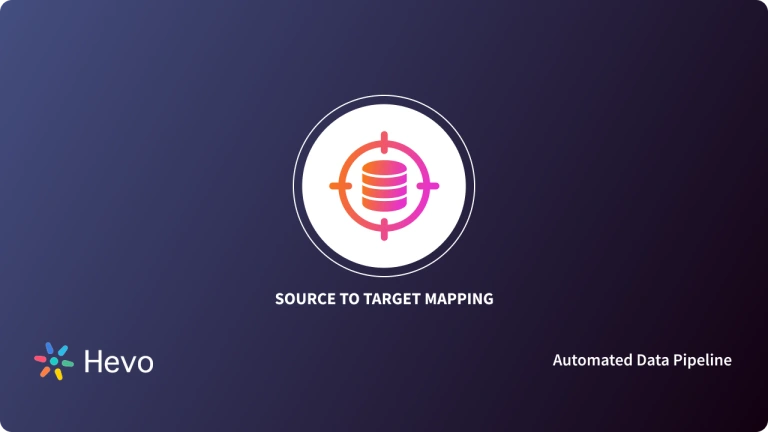Structured Query Language or SQL is the most extensively used language for Relational Database Management Systems (RDBMS). You use the SQL commands to interact with your data in the database. You can do anything from creating a database and updating data to changing a table or defining user rights.
In comparison to traditional SQL-RDBMS, NoSQL Databases such as MongoDB, Cassandra, HBase, Redis have exploded in popularity in recent years. It is due to their less limited structure, scalable schema design, and quicker access. MongoDB is a document-oriented open-source NoSQL Database that stores data in JSON-like objects. Due to its dynamic schema, high scalability, efficient query performance, quicker indexing, and active user community, it has become one of the widely used Databases.
If you’re coming from a SQL background, getting your head around NoSQL and MongoDB principles might be challenging at first since the two technologies have quite distinct approaches to data representation. This article will present you with the MongoDB SQL mapping.
You will learn how the SQL domain, its features, terminologies, and query methods correspond to the MongoDB database. You will be introduced to the amazing features of MongoDB and SQL and understand what makes them so popular. At the end of this article, you will discover some of the best MongoDB SQL mapping tools available in the market. So, let’s get started.
Table of Contents
What is MongoDB?
MongoDB is a NoSQL Document Oriented Database that was created for storing and analyzing large amounts of data. Unlike traditional Relational Databases, it stores data in Collections and documents rather than tables with rows and columns. The Collections are made up of a number of documents, each of which contains the fundamental units of data in the form of key-value pairs.
MongoDB is a database that was first introduced in February 2009. It is created, maintained, and managed by MongoDB.Inc under the SSPL (Server Side Public License). It is preferred by companies like Facebook, Adobe, Google, and others for effectively managing and storing their Big Data.
Key Features of MongoDB
MongoDB has a lot of distinct features that set it apart from other databases. The following are some of the key features:
- High Data Availability & Durability: MongoDB’s Replication capability enables you to backup and recovers data from different servers. It delivers higher Data Availability and Stability since it stores the same data or shards of data across several servers. This provides data access and security at all times, even in the event of server breakdowns, or other issues.
- Horizontal Scalability: MongoDB supports horizontal scalability with the help of sharding. That is it spreads data across several servers using the Shard Key. Every MongoDB Cluster shard stores portions of the data, thus functioning as an independent database. With minimal downtime, this combination of comprehensive databases provides for the effective management of expanding amounts of data.
- Efficient Concurrent Management: MongoDB can successfully manage numerous concurrent read and write requests for the same data thanks to its superior concurrency controls and locking protocols.
- Quick Indexing: MongoDB delivers excellent speed for every query thanks to a wide range of indices and features, including language-specific sort orders that facilitate complicated access patterns to datasets.
- Accelerated Ad-hoc Queries: When executing Ad-hoc queries, you may need to evaluate hundreds to millions of variables. MongoDB indexes BSON documents and uses the MongoDB Query Language (MQL) to offer real-time updates to ad-hoc queries.
Want to learn, more about MongoDB? Explore MongoDB’s Homepage here.
What is SQL?

SQL (Structured Query Language) is a query language that executes queries against a database. It is the standard language for Relational Database Management Systems, according to ANSI (American National Standards Institute). It was released in December 2016 and allows users to access, manipulate, and change data through a variety of queries.
SQL stores data in a table format, with rows representing individual records and columns relating to different attributes. SQL queries are used in all back-end data storage and analysis procedures, and they have 3 phases: Parsing, Binding, and Optimization.
SQL comprises 5 sublanguages:
- Data Definition Language (DDL): Used to define the Database schema.
- Data Manipulation Language (DML): Used to modify the database.
- Data Query Language (DQL): Used for performing queries on the data.
- Data Control Language (DCL): Used to grant and revoke user authority on the Database.
- Transaction Control Language (TCL): Used to manage Database transactions.
SQL is one of the most widely used Database Management languages, with practically every company using it to retrieve data and create bespoke business models. It has aided in the efficient management of data and the delivery of optimal results.
Key Features of SQL
SQL offers a plethora of amazing features that make it an ideal query language for a variety of Databases. Some of these features are briefed below:
- High Performance: For highly transactional, heavy workload, and high usage Database systems, SQL provides high-performance programming capabilities. It allows you to describe data analytically in a variety of ways.
- High Availability: SQL can be used with different Databases, including Microsoft SQL Server, MySQL, Oracle Database, SAP HANA, and others. All of these RDBMS support SQL, and it’s simple to add procedural programming and other SQL operations as application extensions, turning SQL into a powerful tool.
- Easily Scalable: New tables can be easily added. The tables that have been created but are no longer in use can be discarded or removed from a Database easily.
- Robust Transactional Support: SQL programming can handle a high number of records and transactions. It provides the TCL commands to handle the transactions.
- Easy Access Control: SQL makes it simple to provide rights to tables, procedures, and views, ensuring that your data is secure.
- Application Development: Many programmers use SQL to build applications that access Databases. SQL can be used by every business, no matter how big or small they are.
Give a read to SQL Tutorial to understand more about SQL. Explore SQL vs NoSQL Databases to understand the differences between SQL and NoSQL Databases.
In the next sections of this article, you will understand the various MongoDB SQL mapping terminology, methods, and executables. You will also discover the best MongoDB SQL Mapping tools in the market.
Hevo Data, a No-code Data Pipeline, helps load data from any data source such as Databases, SaaS applications, Cloud Storage, SDK,s, and Streaming Services and simplifies the ETL process. It supports MongoDB, SQL, and other 100+ Data Sources including 40+ Free Sources. It is a 3-step process by just selecting the data source, providing valid credentials, and choosing the destination.
Hevo loads the data onto the desired Data Warehouse/destination in real-time and enriches the data and transforms it into an analysis-ready form without having to write a single line of code. Its completely automated pipeline, fault-tolerant, and scalable architecture ensure that the data is handled in a secure, consistent manner with zero data loss and supports different forms of data. The solutions provided are consistent and work with different BI tools as well.
GET STARTED WITH HEVO FOR FREEUnderstanding the MongoDB SQL Mapping
In this section, you will dive deeper into the MongoDB SQL mapping. You will learn more about the MongoDB SQL terminology, database executables, and commonly used SQL commands and their equivalent MongoDB methods.
1) MongoDB SQL: Terminology
MongoDB Databases are made up of Collections, which are similar to SQL Tables in an RDBMS database. Each Collection holds data in the form of Documents, which are similar to Rows of data in Tables. A Document has a JSON-like structure known as BSON in MongoDB, whereas a row holds data in its set of columns.
The graphic below depicts the major SQL terms and concepts, as well as the related MongoDB terms and concepts (in green).
2) MongoDB SQL: Database Executables
The table below lists several Database executables along with their MongoDB executables.
| MongoDB | MySQL | Oracle | Informix | DB2 | |
| Database Server | mongod | mysqld | oracle | IDS | DB2 Server |
| Database Client | mongosh | mysql | sqlplus | DB-Access | DB2 Client |
3) MongoDB SQL: Commands
This section lists the most commonly used commands/methods and parameters for manipulating and querying data in the MongoDB shell. Read the below commands to learn more about MongoDB SQL mapping:
CREATE
SQL
A new table in a SQL Database can be created by using the CREATE TABLE statement.
CREATE TABLE table_name (
column1 datatype,
column2 datatype,
column3 datatype,
....
);The table’s column names are specified by the column parameters. The datatype parameter defines the type of data that can be stored in the column, e.g. varchar, integer, etc.
MongoDB
db.createCollection() is used to create a new collection or view in the Database. Since MongoDB automatically generates a collection when it is first mentioned in the command, this method is mostly used to construct new collections with specific options.
db.createCollection(name, options)Parameters:
- name: The name of the new collection.
- options: Options for configuring a capped collection, preallocating space in a new collection, or generating a view.
ALTER
SQL
To add, delete, or edit columns in an existing table, you can use the ALTER TABLE statement. The statement can also be used to add and remove constraints from a table.
--Add Column
ALTER TABLE table_name
ADD column_name datatype;
--Drop Column
ALTER TABLE table_name
DROP COLUMN column_name;MongoDB
There is no structural modification at the collection level since collections do not specify or enforce the structure of their documents. However, at the document level, updateMany() operations such as:
- $set operator can be used to add fields to existing documents.
- $unset operator to remove fields from the documents.
db.collection.updateMany(filter, update, options)Check out the parameter details for updateMany() in the MongoDB Documentation.
INSERT
SQL
To add new records in a table, you can use the INSERT INTO statement.
INSERT INTO table_name (column1, column2, column3, ...)
VALUES (value1, value2, value3, ...);
--Or
INSERT INTO table_name
VALUES (value1, value2, value3, ...);MongoDB
The insertOne() method inserts a single document into a collection. If the collection does not already exist, then the insertOne() method creates a new collection.
db.collection.insertOne()SELECT
SQL
To select data from a Database, you can use the SELECT command. The returned data is saved in a result table known as the result-set.
--Select particular columns
SELECT column1, column2, ...
FROM table_name;
--Select all fields
SELECT * FROM table_name;MongoDB
The find() method selects documents in a collection or view and returns a cursor to the documents that have been selected.
db.collection.find(query, projection)Parameters:
- query: Specifies the selection filter.
- projection: Specifies which fields in the documents that meet the query filter should be returned.
UPDATE
SQL
The UPDATE statement is used to update the contents of a table’s existing records.
UPDATE table_name
SET column1 = value1, column2 = value2, ...
WHERE condition;MongoDB
The updateMany() method for a collection updates all documents that fit the given filter.
db.collection.updateMany(filter, update, options)Check out the parameter details of updateMany() here.
DELETE
SQL
To delete existing records in a table, you can use the DELETE statement.
DELETE FROM table_name WHERE condition;MongoDB
The deleteMany() method eliminates all documents from a collection that match the specified filter.
db.collection.deleteMany()Check out the parameter details of deleteMany() here.
SORT
SQL
To sort the result set in ascending or descending order, you can use the ORDER BY keyword. By default, it organizes the entries in ascending order. You can use the DESC keyword to sort the records in descending order.
SELECT column1, column2, ...
FROM table_name
ORDER BY column1, column2, ... ASC|DESC;MongoDB
In MongoDB, the order in which the query delivers the matched documents from the provided collection is specified by the sort() method. Before obtaining any documents from the Database, you must apply this method to the cursor.
cursor.sort(sort)The sort parameter in the sort() function specifies the sort order of the result set. It is made up of field and value pairs in the format {field: value}. The values 1 and -1 indicate whether the sort should be ascending or descending respectively. Read how can you can use sort() with find() and other methods here.
COUNT
SQL
The COUNT() function returns the number of rows that meet a given set of criteria.
SELECT COUNT(column_name)
FROM table_name
WHERE condition;MongoDB
The count() method returns the number of documents in the collection or view that would match a find() query. This method counts and delivers the number of results that match a query rather than doing the find() procedure.
db.collection.count(query, options)Parameters:
- query: Specifies the selection filter.
- options: Specifies the additional options for the count. Refer to count() – MongoDB Manual to know the options.
Give a read to the following articles and documentation, for a detailed understanding of MongoDB SQL Mapping:
- MongoDB Article: SQL to MongoDB
- MongoDB SQL Mapping Reference Card
- Example: Mapping Relational Databases and SQL to MongoDB
Best Tools for MongoDB SQL Mapping
Querying with NoSQL is based on the same concepts as querying with SQL, despite the differences in syntax and semantics. As a beginner, a shift from SQL to a NoSQL like MongoDB Query Language (MQL) might be challenging. If you are facing some challenges, you can use the MongoDB SQL mapping tools to develop your expertise. Read along to discover some of the popular MongoDB SQL mapping tools available in the market.
1) Studio 3T
You can use the SQL query language in Studio 3T to query MongoDB. It’s more than simply a MongoDB GUI. It is an IDE as well as a client. It comes with a built-in mongo shell that supports Javascript standard library functions, collection and field names, operators, and methods, as well as autocomplete features. Read this page to learn how you can query MongoDB using SQL.
2) IntelliJ IDEA
To alter data or execute other operations in MongoDB, you develop JavaScript scripts for the mongo shell. For Developers that typically query data using SQL, it may be advantageous to leverage SQL for MongoDB collections as well. Your SQL queries will be converted to JavaScript by IntelliJ IDEA. You can explore more about it here.
3) QueryMongo
QueryMongo.com is a tool that converts SQL statements into MongoDB syntax. It’s very useful for those who are still learning how to work with databases especially the MongoDB SQL mapping. It was developed by Data Analytics company RJMetrics as a side project. Try your hands-on with this tool here.
4) Site24x7
Site24x7 is a free tool that converts SQL queries implemented in MySQL, Oracle, Postgresql, and SQL server to the MongoDB – NoSQL query language. It’s a useful tool for folks who are new to MongoDB and are used to structured Database queries. There are additional options to browse and load the input SQL query, as well as download the output MongoDB query. Explore more about this tool here.
Conclusion
In a nutshell, this article helped you gain a detailed understanding of MongoDB SQL Mapping. You explored the various features of MongoDB and SQL and understood the need for MongoDB SQL Mapping. Moreover, you discovered terminology, database executables, and equivalent MongoDB commands for SQL. At the end of this article, you unraveled some of the popular MongoDB SQL Mapping tools available in the market.
However, as a Developer, extracting complex data from a diverse set of data sources like Databases, CRMs, Project management Tools, Streaming Services, Marketing Platforms to your MongoDB Database can seem to be quite challenging. This is where a simpler alternative like Hevo can save your day! Hevo Data is a No-Code Data Pipeline that offers a faster way to move data from 100+ Data Sources such as MongoDB, SQL, and other 40+ Free Sources, into your Data Warehouse to be visualized in a BI tool. Hevo is fully automated and hence does not require you to code.
VISIT OUR WEBSITE TO EXPLORE HEVOWant to take Hevo for a spin?
SIGN UP and experience the feature-rich Hevo suite first hand. You can also have a look at the unbeatable pricing that will help you choose the right plan for your business needs.
Share your experience with MongoDB SQL Mapping in the comments section below!





